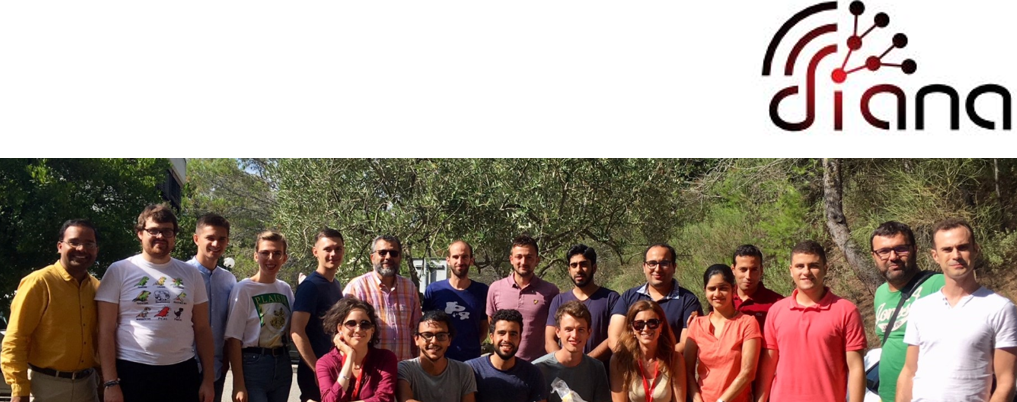The overall objective of the DIANA project-team is to provide network architectural support for improving citizen rights in the Internet. To do so, we will work to provide service transparency and user data control in the context of hundreds of billions of both wired and mobile devices. Our methodology includes advanced measurement techniques, design and implementation of architectural solutions, and their validation in adequate experimental facilities.
The high complexity of the Internet architecture, protocols and services, and the economic interests of the big stakeholders result in a lack of transparency on network operations, making, for instance, privacy leaks hard to identify, and performance difficult to assess. This state is complex to change because: i) the economic model of all the Internet companies is based on building users profile to either make targeted advertisements or purchase recommendations, and ii) the Internet architecture and protocols have never been conceived for the current Internet usage, but for a small scale, trustworthy academic and research network. Solving the lack of transparency by changing the economic model of the Internet seems like a very losing shot, because of the pervasive user-profiling oriented business model. Hardware manufacturers (e.g., smartphones), OS developers (e.g., iOS, Android), advertisement networks (e.g., AdSense), applications making revenues from commercial advertisements, all contribute to building users profile. The single possibility to improve transparency is by addressing architectural and protocol issues in the current Internet. For instance, apart from the ICMP protocol, the Internet does not provide any further support to explore the root causes of end-users service degradation. It is important to understand the primitives that the network must report to improve transparency. This requires a deep understanding of the current practices of network operators, service providers, and end-users, and strong system and architectural competencies to identify the right approach to improve transparency.
In addition to the deliberate opacity of the system, the ossification of the Internet architecture around the IP protocol makes introduction of new functionalities in the network quite difficult, if at all possible, and requires in all cases long development and validation cycles. For example, information-centric networking solutions have been discussed for several years, and yet there is no globally deployed solution for content management. Therefore, users currently have no control on their contents and depend on big private companies (e.g., Google drive, iCloud, dropbox, Microsoft OneDrive) to easily access and share data at the expense of their privacy. However, the recent development of software-defined network (SDN) and network functions virtualization (NFV) concepts open the perspective of faster deployment of network functionalities, as it abstracts the whole network as a single piece of software, instead of a large number of heterogeneous and dedicated devices to be configured one-by-one. In this context, it is very important to identify common user applications needs and to provide an architectural ground based on network programmability.
In the DIANA project-team, we will pursue two main research directions: (i) designing and deploying a measurement plane providing network service transparency, and (ii) defining and deploying an open network architecture for user control.

